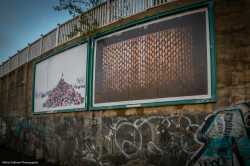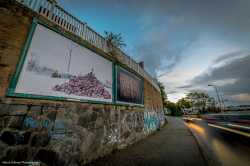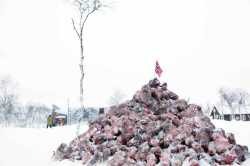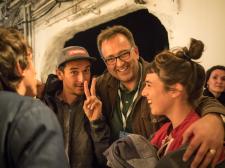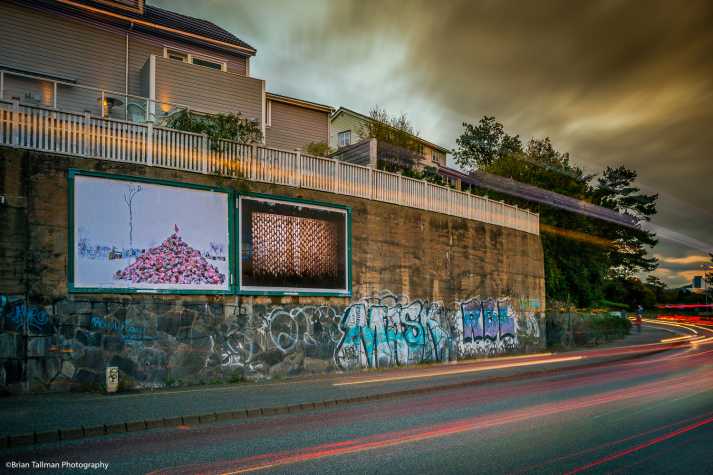
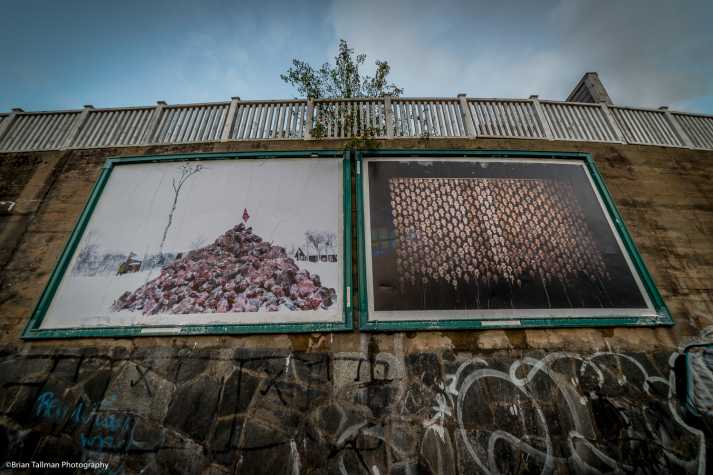
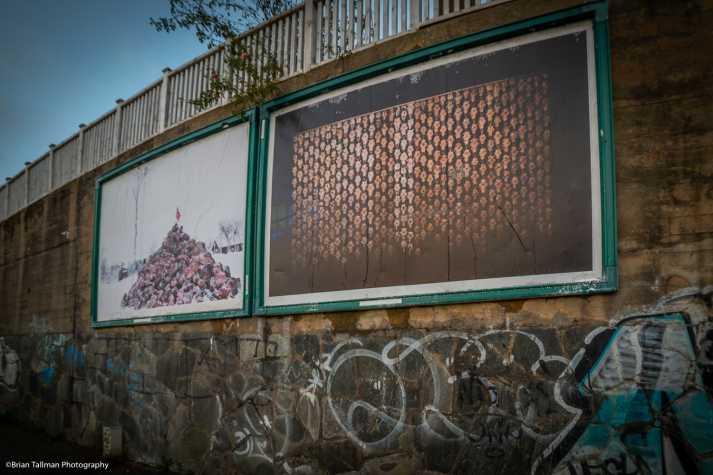

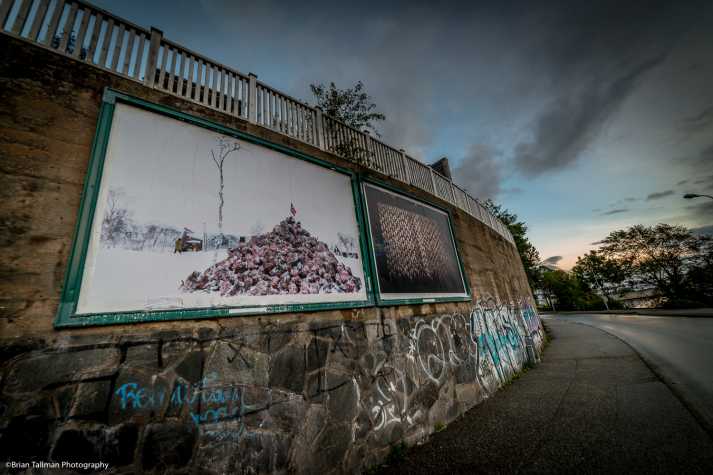



MÁRET ANNE SARA (NO) - PILE O’ SÁPMI
Within the ever-evolving movement known as ‘street art’ the act of subverting advertisements (or ‘subvertising’) has long been utilised as a tool for social commentary and protest. By appropriating commercial billboards artists are able to raise awareness about who has the power and authority to communicate messages and create meaning in our urban environments. By mimicking the scale and visibility of advertising, The Nuart Billboard projects acknowledge street art’s heritage of ‘subvertising’. No longer content with appropriating commercial billboards, we take it a step further by creating and curating our very own sites, giving a voice and platform to amplify messages from artists the world over. The Nuart Billboard project is twinned with Nuart Aberdeen where two similar billboards were mounted earlier this year.
We're absolutely honoured to be able to host Máret Ánne Sara's "Pile o’ Sápmi" project, one of the country's most outstanding works of recent years.
MÁRET ANNE SARA (NO) - PILE O’ SÁPMI
A young Sámi reindeer herder is fighting in court against stately initiated forced culling of reindeer, a policy that will drive him and other reindeer herders out of their livelihood and thereby culture and inherited rights. The forced cull is dramatically affecting small herders such as the youth, and is therefore effectively strangling the recruitment of Sámi reindeer herding. The young herder won his case twice and the verdicts stated that the government violates his rights protected by international conventions on human rights and the International Covenant on Civil and Political Rights. The Norwegian government appealed again to the Norwegian Supreme Court and the reindeer herder lost the case in December 2017. The Norwegian Supreme court vent in favour of the Governments political arguments, disregarding the previous verdicts. The national law affecting Sámi reindeer herders, which sanctions the forced slaughter of reindeer, was passed against the will of the Sámi Parliament, the Reindeer Herders Association of Norway and individual reindeer herders. The case sets a hugely important precedent, in terms of indigenous rights in Norway and the rights of reindeer herders in particular.
Máret Ánne Sara (b. 1983, Hammerfest, Norway)
On February 1, 2016, the town of Tana in Sápmi/Northern Norway awoke to the sight of 200 reindeer heads piled into a pyramid in front of the Indre Finnmark District Court. This was the day that young reindeer herder Jovsset Ánte Sara initiated public proceedings against the Norwegian state to challenge the obligatory cull dictated by the Norwegian Reindeer Herding Act of 2007, claiming that standardized herd reduction was tantamount to enforced bankruptcy.
As the Sámi community struggles to preserve its identity—its language, livelihood, and culture—after centuries of “Norwegianization,” the forced culls affect the youngest, and smallest, herders the most. These herders are a fragile link to traditions that the Sámi community has a legal right to preserve. Pile o’ Sápmi was conceived by Marét Ánne Sara as an artwork and “as an extended art movement accompanying the trial of my brother … to highlight the struggle taking place.” Born in 1983, to a family of reindeer herders in Kvaløya, Sara is the founder of the Kautokeino artist collective. She is part of a new generation of Sámi artists working to uphold the rights of their community.
Pile o’ Sápmi draws upon spiritual, ecological, and political concerns. It references “Pile of Bones,” the Indigenous name for the place where the Cree nation stacked buffalo bones to anchor the animals’ spirits to the land, thereby ensuring their continued presence in what is today known as Western Canada. The artist also refers to the brutal colonial history of North America, where trophy mountains of bones testified to the buffalo massacre that served to dispossess Indigenous peoples of the land and pen them into reserves. These bones were also used to produce fine bone china, an interest reflected in Sara’s latest work.
Sámi leitmotifs of adaptability and recyclability are also evident in the way that Pile o’ Sápmi allows natural processes to unfold varying narratives. If the freshly slaughtered reindeer heads provide the nose and eye with uncomfortable reminders of decay, the bullet holes at the center of their skulls reveal the colonial killing system’s disrespect for Indigenous processes that would have preserved and utilized every part of the dead animals.
Máret Ánne Sara’s brother won the trial; the verdict stated that the cull violates his property rights as protected by the European Convention on Human Rights. The Norwegian government has appealed the case.
— Katya García-Antón, Director of the Office for Contemporary Art Norway (OCA)
For more info : www.pileosapmi.com




